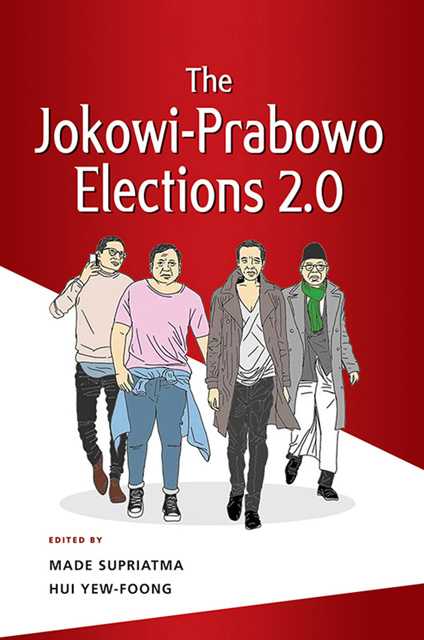9 - Chinese Political Participation Since Independence: Between National Identity and Ethnic Identity
Published online by Cambridge University Press: 30 June 2023
Summary
Indonesia held simultaneous elections for president and both the national and regional parliaments on 17 April 2019. According to information available on the ethnic backgrounds of successful candidates, at least eleven Indonesians of Chinese descent have been elected into the national parliament, the Dewan Perwakilan Rakyat (DPR); also, several Chinese Indonesians have been elected into regional parliaments or the Dewan Perwakilan Rakyat Daerah Provinsi (DPRD). These numbers show clearly that there was Chinese political participation in Indonesia.
Political Participation and Ethnic Chinesebased Politics
Political participation is defined here as “activity by private citizens designed to influence governmental decision-making”. It includes violence (Huntington and Nelson 1976, p. 4). In my view, political participation can be divided into formal political participation and informal political participation. Formal political participation involves participating through political parties while informal political participation refers to political activity through non-governmental organizations, civil society organizations or pressure groups.
Ethnic Chinese political participation in Indonesia has occurred at both the formal and informal levels. However, Chinese political activity is designed not merely to influence governmental decision-making but also to strengthen the national identity of the Chinese minority. It is through political participation, especially through formal participatory processes, that the Chinese minority has become recognized as part of the Indonesian national polity.
The Chinese have been involved in politics since the colonial period. It is important to note here that the Chinese in Indonesia were not— and still are not—a homogeneous group. They can be divided into two categories, peranakan and totok (singkeh). The former refers to the local-born and Indonesian-speaking Chinese while the latter refers to China-born, Chinese-speaking Chinese. The latter were newcomers in relative terms. Their direct descendants were often Chinese-educated and preserved the culture of their migrant fathers, so culturally they were often considered as totok. The Chinese who were involved in local politics were usually the peranakans. Nevertheless, owing to the absence of significant numbers of Chinese new migrants into Indonesia during the Suharto period, Chinese Indonesians, especially the younger generations, have been highly Indonesianized.
Prior to World War II, Chinese political participation was on ethnic terms, i.e., the Chinese took part in politics mainly through ethnic organizations.
- Type
- Chapter
- Information
- The Jokowi-Prabowo Elections 2.0 , pp. 165 - 196Publisher: ISEAS–Yusof Ishak InstitutePrint publication year: 2022



